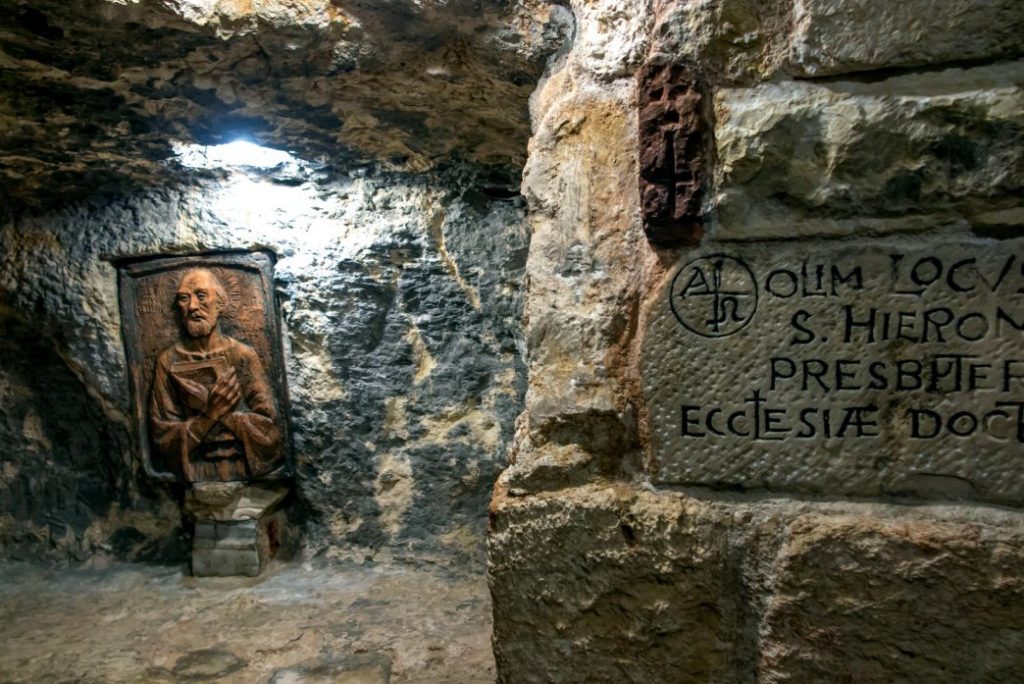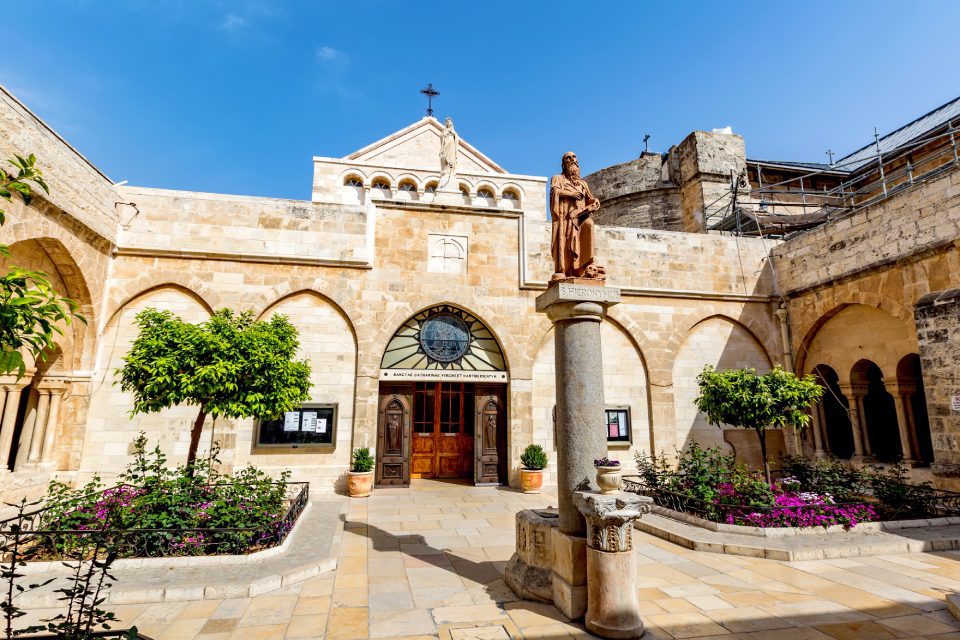Jerome c. 347 – 30 September 420, was a theologian; and historian. He is commonly known as Saint Jerome. He is best known for his translation of most of the Bible into Latin (the translation that became known as the Vulgate) and his commentaries on the Gospels. His list of writings is extensive.

Jerome: His Early Life
He was not baptized until about 360–366 in Rome, where he had gone with his friend Bonosus of Sardica to pursue rhetorical and philosophical studies. There he learned Latin and at least some Greek. As a student, Jerome engaged in the superficial escapades and sexual experimentation of students in Rome; he indulged himself quite casually but he suffered terrible bouts of guilt afterward. To appease his conscience, on Sundays he visited the sepulchers of the martyrs and the Apostles in the catacombs.

Jerome: His Conversion to Christianity
Although initially skeptical of Christianity; he eventually converted. After several years in Rome; he traveled with Bonosus to Gaul and settled in Trier where he seems to have first taken up theological studies; where he made many Christian friends. Some of these accompanied Jerome when in about 373 he set out on a journey through Thrace and Asia Minor into northern Syria. At Antioch, where he stayed the longest; two of his companions died and he himself was seriously ill more than once. During one of these illnesses (about the winter of 373–374), he had a vision that led him to lay aside his secular studies and devote himself to God.
Seized with a desire for a life of ascetic penance; Jerome went for a time to the desert of Chalcis; to the southeast of Antioch, known as the “Syrian Thebaid” from the number of eremites inhabiting it. During this period, he seems to have found time for studying and writing. He made his first attempt to learn Hebrew under the guidance of a converted Jew; and he seems to have been in correspondence with Jewish Christians in Antioch. Around this time he had copied for him a Hebrew Gospel; of which fragments are preserved in his notes. It is known today as the Gospel of the Hebrews which the Nazarenes considered being the true Gospel of Matthew. Jerome translated parts of this Hebrew Gospel into Greek.
Back to Rome (382-385)
He was in Rome again, as secretary to Pope Damasus I and the leading Roman Christians. In Rome Jerome was surrounded by a circle of well-born and well-educated women; including some from the noblest patrician families, such as the widows Lea; Marcella, and Paula; with Paula’s daughters Blaesilla and Eustochium. The resulting inclination of these women towards the monastic life; away from the indulgent lasciviousness in Rome; and his unsparing criticism of the secular clergy of Rome, brought a growing hostility against him among the Roman clergy and their supporters.
Soon after the death of his patron Pope Damasus I on 10 December 384, Jerome was forced to leave his position at Rome after an inquiry was brought up by the Roman clergy into allegations that he had an improper relationship with the widow Paula. Still, his writings were highly regarded by women who were attempting to maintain a vow of becoming a consecrated virgin.
Additionally, Jerome’s condemnation of Blaesilla’s hedonistic lifestyle in Rome had led her to adopt ascetic practices; but it affected her health and worsened her physical weakness to the point that she died just four months after starting to follow his instructions; much of the Roman populace were outraged at Jerome for causing the premature death of such a lively young woman; and his insistence to Paula that Blaesilla should not be mourned, and complaints that her grief was excessive, were seen as heartless, polarising Roman opinion against him.

After Rome
In August 385, Jerome left Rome for good and returned to Antioch; accompanied by his brother Paulinian and several friends and followed a little later by Paula and Eustochium who had resolved to end their days in the Holy Land. In the winter of 385; Jerome acted as their spiritual adviser. The pilgrims, joined by Bishop Paulinus of Antioch, visited Jerusalem, Bethlehem, and the holy places of Galilee, and then went to Egypt, the home of the great heroes of the ascetic life.
Late in the summer of 388 he was back in Palestine, and spent the remainder of his life working in a cave near Bethlehem, the very cave where Jesus was born; surrounded by a few friends; both men and women (including Paula and Eustochium); to whom he acted as priestly guide and teacher.
Amply provided for by Paula with the means of livelihood and for increasing his collection of books, Jerome led a life of incessant activity in literary production. To these last 34 years of his career belong the most important of his works; mainly his version of the Old Testament from the original Hebrew text.
It is recorded that Jerome died near Bethlehem on 30 September 420. The date of his death is given by the Chronicon of Prosper of Aquitaine. His remains, originally buried at Bethlehem.
Translation of the Bible (382-345)
Jerome was a scholar at a time when that statement implied fluency in Greek. When he started his translation project; but moved to Jerusalem to strengthen his grip on Jewish scripture commentary. A wealthy Roman aristocrat; Paula, funded his stay in a monastery in Bethlehem and he completed his translation there. He began in 382 by correcting the existing Latin-language version of the New Testament; commonly referred to as the Vetus Latina. By 390 he turned to translate the Hebrew Bible from the original Hebrew, having previously translated portions from the Septuagint which came from Alexandria
He completed this work by 405. Prior to Jerome’s Vulgate; all Latin translations of the Old Testament were based on the Septuagint, not the Hebrew. Jerome’s decision to use a Hebrew text instead of the previous-translated Septuagint went against the advice of most other Christians, including Augustine, who thought the Septuagint inspired.
On my Bethlehem Private Tours, I take my guests to the exact cave where Saint Jerome spent so many years of his life. The cave is just next to the Church of Nativity and under St. Catherine Church. If time permits and my guest would like to I like to take them to the famous Mar Saba Monastery. Officially one of the oldest ones in the world! Going back to the Byzantine Period. Amazingly still active till today! So don’t think about too much my friends and contact me to inquire about a tour to Bethlehem! I promise you it will be interesting and mostly lots of fun! Even thou it is in Palestine we can go there if the conditions are right, no problem at all! I love going there and support local tourism in Bethlehem. Indeed they need it badly.

